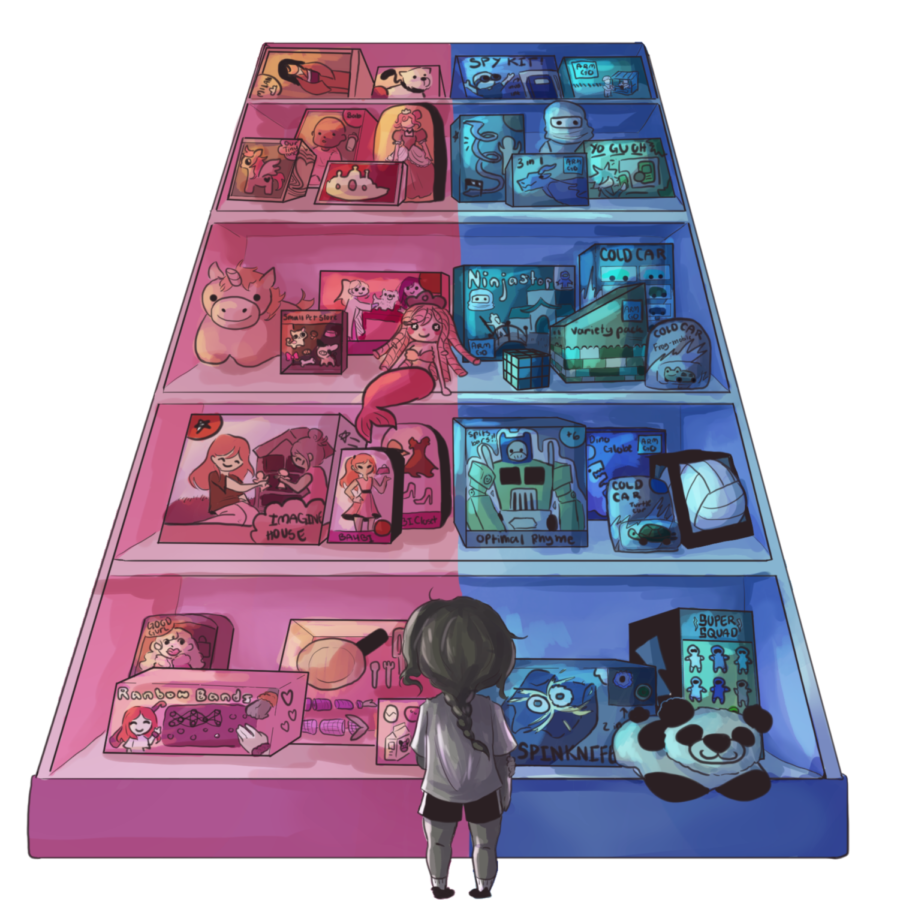Where STEM Girls At?
In order to close the gender gap in STEM career fields, it is necessary to advertise comparable entertainment towards young girls as well as boys.
Walking down the toy aisle, there’s a stark difference between the green and blue legos and building sets you find in the boy’s section and the Barbie and princess dolls you find in the girl’s section. The inequality doesn’t stop there – many of our popular childhood shows featured male protagonists exploring and conquering science – Bob the Builder, Jimmy Neutron, Sid the Science kid, Wild Kratts and even Bill Nye the Science Guy have all been showcased on our favorite television channels and at school. Fast forward to actual engineering and tech workplaces – there continues to be a lack of female representation. The staggering ratio of men to women in engineering is five to one, according to the website TechJury, while an astonishing 26 percent of the tech workforce is made up of females.
The solution has historically been to just recruit and elevate the comparably few women with tech skills to higher positions – which is great, yet the gender gap, with only 26.7% of females holding tech-related jobs, in STEM continues to widen. If we want to promote diversity in the workplace, as a society, we need to backtrack to change the entertainment we receive during our earliest days, advocating for female protagonists on TV and strolling the toy store aisles that include by pink and purple building blocks, to push an interest in girls from a young age to explore STEM-related subjects.
“Among characters in STEM professions, male characters outnumber female characters two-to-one (70.2% compared with 29.8%),” according to the Geena Davis Institute on Gender Media. In addition, according to an article from The Guardian, the Institution for Engineering and Technology found toys with a technology focus were three times as likely to be targeted at boys than girls. I remember when, as a child, the toys and shows advertised to me were comprised of dolls, makeup, nail kits, etc. There’s nothing wrong with that – except while I, and my other female friends, were receiving pampering toys, our male friends were receiving building blocks, giant lego sets and scientific toys.
Guys gain an unfair upper hand as they wield their own interests in STEM subjects quicker than girls when they get exposure to mechanical toys from a younger age – and this plays a vital role later on in their course selections and success in high school, college and their careers.
The solution? Entertainment branded towards girls should be geared towards sparking a mechanical interest in girls from a young age.
SciGirls, a TV show, while targeted at tweens, encourages girls to explore science, technology, engineering and math subjects. Each episode follows a group of middle school girls who are eager to find answers to their questions while inspiring kids to explore the world of science and technology. The girls in the show radiate a passion to young girls watching – one that inspires them to devise solutions to problems (a very important skill in STEM subjects called problem-solving) and think outside the box. More and more of these shows should be broadcasted so girls receive the representation they need to kindle a hidden passion they may have for science and/or technology.
Debbie Sterling, an engineer, founded GoldieBlox, a toy company out to inspire the next generation of female engineers. In 2013 she gave a TedTalk describing her journey as a minority in the workplace and how she has since set out to reduce the gender gap. Sterling crafted toys and activities designed to appeal to young girls while also exposing them to stories of inspiring women engineers and allowing them to experiment with scientific-inspired projects and items. Making her toys attractive to the eyes of young girls has helped kickstart an interest for many young girls to pursue STEM careers. We need more toys like this for girls.
These solutions might sound cringe to teens and adults, yet taking steps to direct STEM interests at girls from a young age could play a great role in piquing women’s interests in technology and engineering jobs. After all, women have repeatedly shown their strength and adaptability through history – and in turn girls should be more inspired to expand their horizon of interests in the world of STEM and aspire to be more than little princesses.

Heyy I'm Simra and this is my fourth year on staff. Aside from Journalism, I love walks on the beach, reading, and Netflix. I'm a big advocate for bridging the gender gap in STEM. I am also interested...



